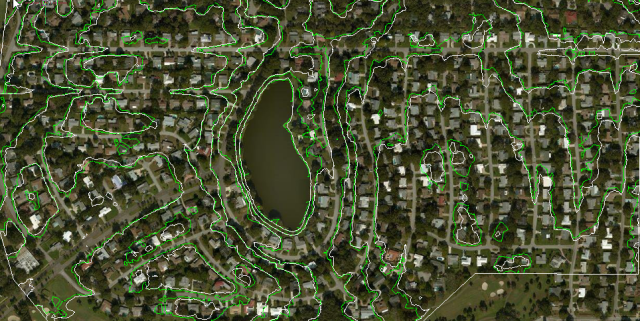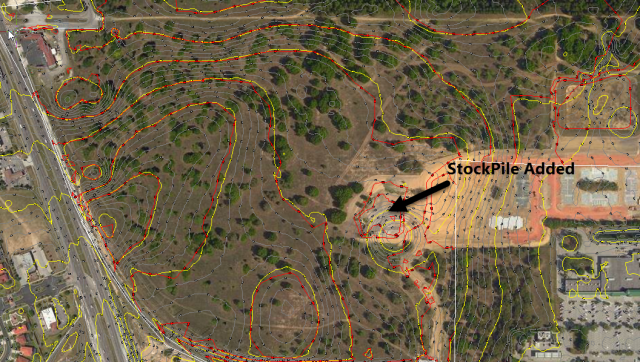This post has been updated and moved here.
Google Earth provides access to its elevation data with a free Google Elevation API key. Civil Site Design takes advantage of this feature with its new Satellite to Surface functionality. This feature allows you to select an area and the distance between grid points. It returns a contoured surface integrated with the Civil Site Design software and an aerial image.
I was curious about the accuracy of the data provided by Google. There were two potential use cases I had in mind:
- Conceptual/preliminary design for new subdivisions
- Accessing basin topography for flood plain analysis with HEC RAS 2
For evaluation purposes, I selected two sites:
- Site 1 was a heavily treed subdivision in Dunedin Florida. For this site, I had originally downloaded and processed over 2 million LIDAR points from the NOAA website.
- Site 2 was a proposed commercial subdivision in Lake County Florida where we had topographic survey data on a 100 foot grid as well as detailed surveys of existing infrastructure.
The satellite to surface feature generated surfaces for the two test areas in less than 10 minutes each. The surfaces generated from the Google elevation data were amazingly accurate when compared to both LIDAR and survey data.
Existing Subdivision Site
A comparison of the 5’ contours from the LIDAR (Green) and Google data (white) is presented below.

The results are very similar, however, the original LIDAR data were 8.5 feet too low when compared to the known lake level. This adjustment was added to the LIDAR data before the LIDAR contours were created.
A detailed comparison of the surface data from the two data sources is presented below. The 1/2, 1/3 and 2/3 average heights are virtually identical. The weighted average height is 3 feet higher for the LIDAR data. This is attributed to denser points in open areas compared to treed areas. The satellite data was generated on a consistent 20’ grid.

A visual inspection of the Satellite data below also compared very favorably to actual ground conditions.

In this particular case, a nod had to be given to the Google elevation in terms of raw accuracy and the general shape of the contours in relation to existing roads and house locations.
Commercial Subdivision Site
In the commercial subdivision example below the yellow contours were generated from the 20’ grid satellite data; red contours from the 100’ grid survey data.

Local knowledge is, however, important as the elevation data is not date stamped. For example, a depression was filled in and a stockpile was created after the Google elevation data was collected. Similarly, a retention pond was constructed in the north east part of the site after the elevation data was collected.
Although the satellite data would not be used in lieu of the survey data on the site itself, it was extremely useful in defining the basin to the north of the site for flood plain analysis.
Summary
The source of Google elevation data varies widely based on location. You can learn more about Google elevation data here – although it very much remains a mystery. It appears, however, that the NOAA LIDAR data has been incorporated into the Google Elevation data.
Although this analysis is not scientific, it does indicate that Google Elevation data should be considered for cost effective conceptual design for subdivisions and to generate a basin surface that can be used for flood analysis with applications like HEC RAS 2.

Pingback: Most Civil/Survey Firms Are Not Well Served by Civil 3D | Emerging Technologies for the Field and the Office
Pingback: Most Civil/Survey Firms Are Not Well Served by Civil 3D | ChasmTech.com